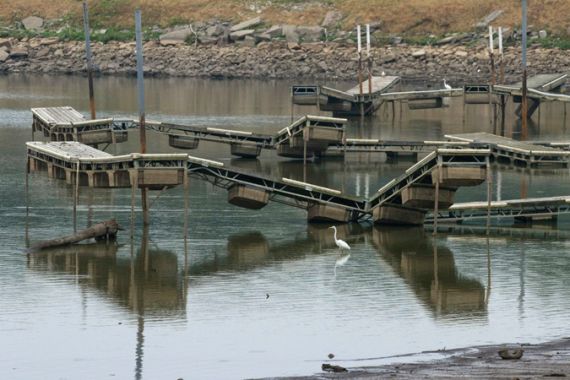The hottest July ever
Last month’s temperatures in the US were the hottest on record.

 July 2012 was even hotter than July 1936, which was the peak of the heat in the Great American Dust Bowl [REUTERS]
July 2012 was even hotter than July 1936, which was the peak of the heat in the Great American Dust Bowl [REUTERS]
Last month will go down in the history books as the warmest July and all-time warmest month in the US since recording of weather began in 1895.
The National Oceanographic and Atmosphere Agency (NOAA) released a report on 8 August after compiling the month’s data. It found that the lower 48 states were 1.8C (3.3F) above average. This value is for all of the contiguous states together, but some of individual states were much hotter, up to 5C above the norm.
Keep reading
list of 4 itemsAfter the Hurricane
World’s coral reefs face global bleaching crisis
Why is Germany maintaining economic ties with China?
The regions affected most were the Plain states, the Midwest and along the Eastern Seaboard.
The previous warmest July for the nation in 1936, during the Great American Dust Bowl, when the average US temperature was 25.2C.
This July, extreme heat wasn’t the only major weather event that affected the country. The country’s southwest was particularly wet. The very active monsoon contributed to California seeing its fifth wettest July on record, while Nevada had its eighth.
On the other side of the spectrum, Nebraska, Iowa, Illinois and Missouri reported having precipitation totals that ranked amongst their ten driest months ever.
Averaging the rain totals for all 48 states, the nation saw 6.5cm in 31 days. That is half a centimetre lower than normal. This doesn’t sound like a lot, but it had major ramifications.
According to the US Drought Monitor (USDM), 62.9 percent of the lower 48 states experienced moderate to exceptional drought at the end of July. This is an increase of about 6.9 percent compared to the end of June.
The extreme dry conditions and excessive heat devastated crops and livestock from the Great Plains to the Midwest.
Not only did the drought affect agriculture, but it also caused the Lower Mississippi River to see near-record low levels, impacting vital river transportation.
The last time drought was this extensive was in December 1956 when about 58 percent of the nation was in moderate-to-extreme drought.
The warm and dry conditions over much of the country were ideal for wildfire conditions as well. Over 800,000 hectares burned nationwide during July due to wildfires, making it one of the fourth most active months on record.
Oregon lost over 200,000 hectares in its largest ever wildfire to affect the state since the 1840’s.
The National Weather Service’s Climate Prediction Center issues quarterly temperature and rain forecasts. The outlook is not good. Through October conditions especially for the Midwest are expected to remain dry and warm, only complicating the ongoing drought and agricultural catastrophe.